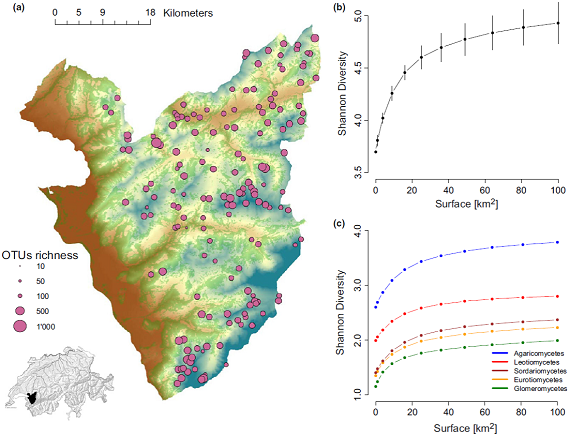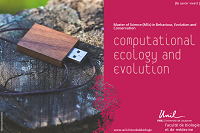
Computational Ecology and Evolution specialisation
Specific training objectives
At the end of their studies, students will be able to:
- Model population processes.
- Make advanced use of computer and statistical methods in ecology and population biology.
- Use computer programming techniques.
Objectives & Content
 How do pollinators and flowers co-evolve? What determines the distribution of plants in complex mountain landscapes? Can the same models explain ant and primate behavior? Is natural selection or demography more important in the differences between populations? Computational approaches increasingly matter for ecologists and evolutionary biologists, as they allow to use elaborate mathematical models as well as to manage and analyze abundant data.
How do pollinators and flowers co-evolve? What determines the distribution of plants in complex mountain landscapes? Can the same models explain ant and primate behavior? Is natural selection or demography more important in the differences between populations? Computational approaches increasingly matter for ecologists and evolutionary biologists, as they allow to use elaborate mathematical models as well as to manage and analyze abundant data.
Ecology and evolution draw on a strong tradition of quantitative biology. Population genetics, quantitative genetics, ecological models, management of ecological resources, geographical information systems, phylogenetics, or behavioral ecology: not only these fields use statistical methods and algorithms, but they have invented many of them. Moreover, genomics is increasingly important, from population genomics to sex determination systems, or to the convergent evolution of genomes and phenotypes. Biologists studying biodiversity must be able to harness the theory, concepts and methods necessary to explore these new types of data.
In order to meet this challenge, the CEE programme aims at providing biology students with a quantitative way of thinking in ecology and evolution, and transferable skills in statistics and programming.
In the CEE programme, students will acquire the skills for:
- modeling populational processes;
- making an advanced use of computational and statistical tools for ecology and evolutionary biology;
- programming in both generalist and specialist languages.

Kaboompics @ Karoline | Pellissier L. et al. (2014); doi:10.1111/mec.12854
For any administrative question (e.g. registration, equivalencies, etc.) : please contact the School of Biology.




